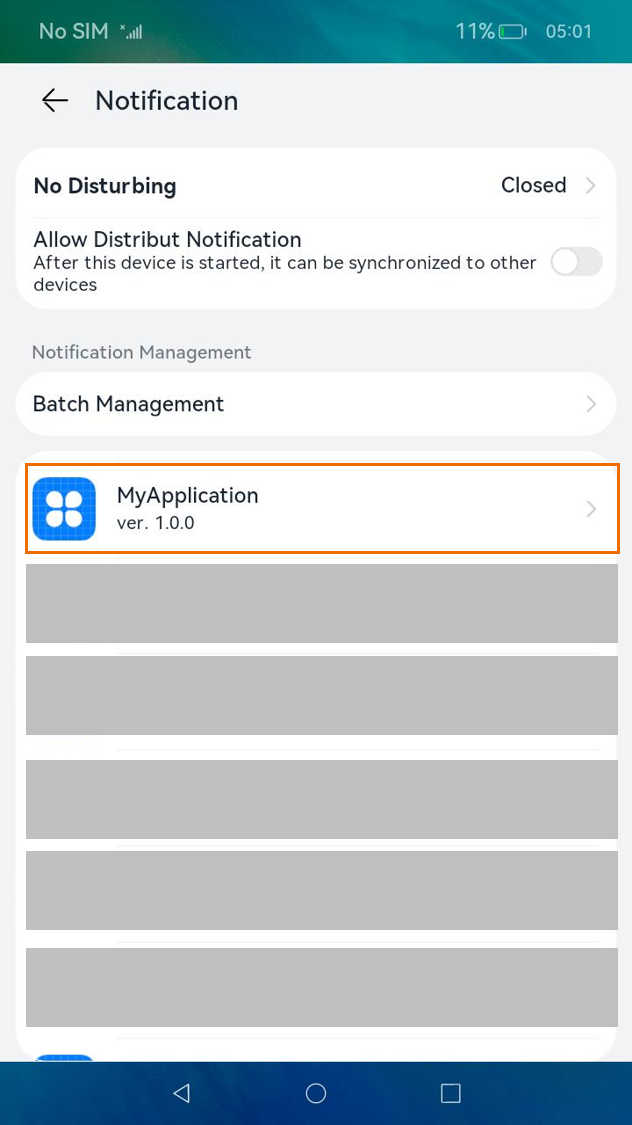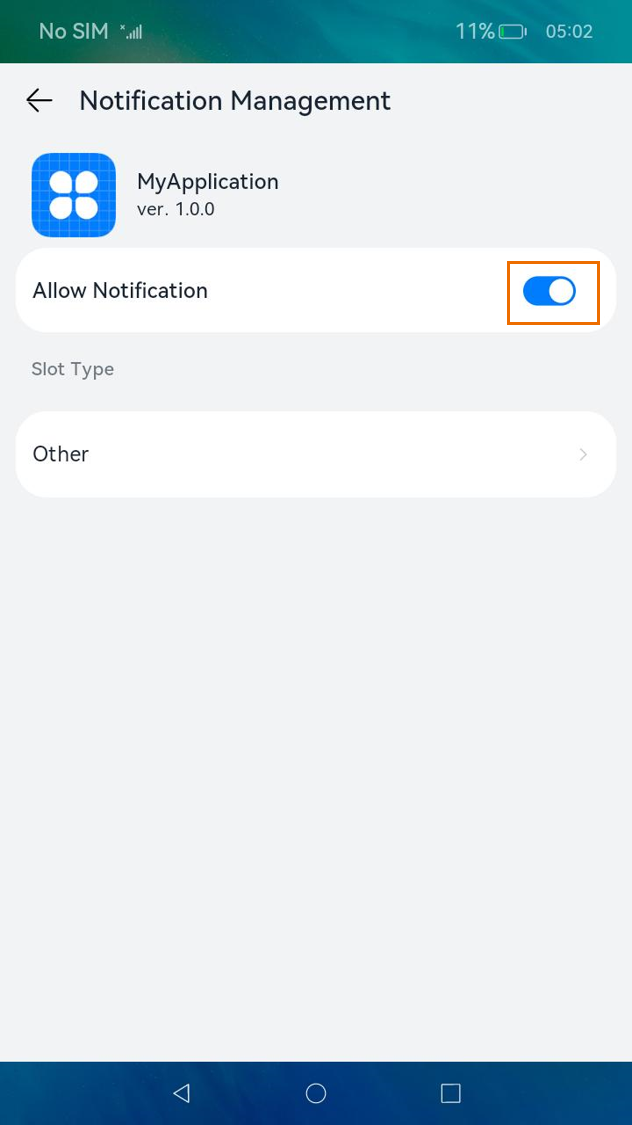Enabling Notification
To publish a notification, you must have notification enabled for your application. You can call the requestEnableNotification() API to display a dialog box prompting the user to enable notification for your application. Note that the dialog box is displayed only when the API is called for the first time.
Figure 1 Dialog box prompting the user to enable notification

-
Touching allow enables notification for the application, and touching ban keeps notification disabled.
-
The dialog box will not be displayed again when requestEnableNotification() is called later. The user can manually enable notification as follows.
| 1. Swipe down from the upper left corner of the device screen to access the notification panel. | 2. Touch the Settings icon in the upper right corner. On the notification screen, locate the target application. | 3. Toggle on Allow notifications. |
|---|---|---|
 |
 |
 |
Available APIs
For details about the APIs, see @ohos.notificationManager.
Table 1 Notification APIs
| Name | Description |
|---|---|
| isNotificationEnabled(bundle: BundleOption, callback: AsyncCallback<boolean>): void | Checks whether notification is enabled. NOTE This is a system API and cannot be called by third-party applications. |
| setNotificationEnable(bundle: BundleOption, enable: boolean, callback: AsyncCallback<void>): void | Sets whether to enable notification. Notification can be enabled or disabled in Notifications of the target application under Settings > Apps & services > Apps. NOTE This is a system API and cannot be called by third-party applications. |
| requestEnableNotification(callback: AsyncCallback<void>): void | Requests notification to be enabled. When called for the first time, this API displays a dialog box prompting the user to enable notification. |
How to Develop
-
Import the NotificationManager module.
import notificationManager from '@ohos.notificationManager'; -
Call the API to request notification to be enabled.
notificationManager.requestEnableNotification().then(() => { console.info(`[ANS] requestEnableNotification success`); }).catch((err) => { console.error(`[ANS] requestEnableNotification failed, errCode[${err}]`); });